The National Hockey League has a salary cap, which roughly translates to the total amount of money a team can pay their full team of players.
In practice, there are plenty of areas where the salary cap is disconnected from player value, enabling a team to stay under the salary cap while assembling a roster whose talent value is well above the cap.
The San Jose Sharks’ Salary Cap
The NHL salary cap for the 2018-19 season sits at $79.5 million. Yet the San Jose Sharks might be the first team to assemble a roster with a $100 million value.
How is this measured?
I’ll use a pretty simple approach. In this piece, the salary cap “hit,” or the amount accorded to the salary cap for a player in any given year will be based on either
1. what the player is getting this season or
2. what he’ll make next season under a new contract
I’ve included more detail in the notes at the end of the article for those who wish to dig into the nuances of the salary cap.
Many players, both for the Sharks and elsewhere in the league, get paid less than full value because they are playing under older deals or had restrictions which limited their ability get full value in their existing deal. This is especially true for younger payers, where restrictions can substantially limit their bargaining power. The biggest gaps between the actual cap hit as defined by the league and a player’s value tend to be when a player is in the final year of their deal and will have more bargaining power than they did in their prior deal (I also cover this in the notes). The Sharks have several players in these situations.
I’ll start with where the Sharks are now. The players combine for a 2018-19 salary cap hit of $77 million. But there are a number of players who have contracts ending this season and should expect to make more under new deals next season. Most of these deals will be signed in early July, less than two months from now. I’ll estimate the new salary cap hit for these players.
Sharks Free Agents
The list of players headed for a new deal includes: Joe Pavelski, Erik Karlsson, Timo Meier, Gustav Nyquist, Joonas Donskoi, Kevin Labanc, Tim Heed and Joakim Ryan.
Will the new deals these players sign increase their current salary cap hit by a cumulative $23 million?
Let’s get started.
Joe Pavelski
Pavelski is an unrestricted free agent and has a cap hit of $6 million, but players who score 38 goals get paid well in this league and there’s no reason Pavelski won’t get some sort of increase. Add in Pavelski’s reputation for coming up big in big games and the money will be there. His age is a factor, which makes a lengthy deal unlikely, but someone will pay him $8 million for shorter term. Probably the Sharks.
Pavelski: add $2 million.
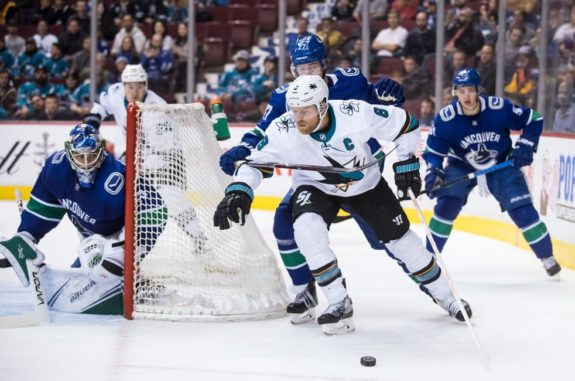
Erik Karlsson
Karlsson is an unrestricted free agent. He is also arguably the best defenseman in the league, and while health issues might limit the top end a bit, he’ll certainly join the eight-digit club if he chooses. I’m estimating $10.5 million here, a $4 million cap hit increase over this season. Someone may pay him more, but probably not the Sharks.
Karlsson: add $4 million
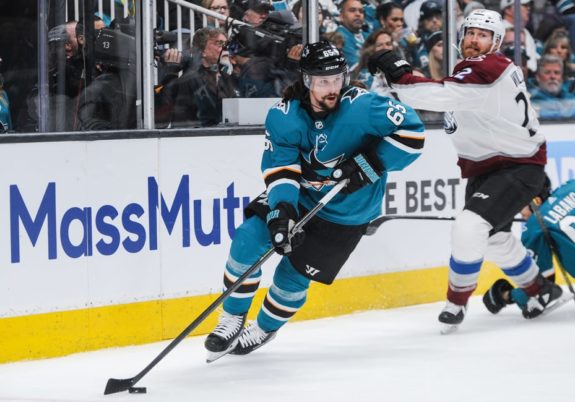
Timo Meier is a restricted free agent. The restrictions favor the team and wind up in a lower salary than an unrestricted free agent might get. Players in Meier’s position often trade between salary and term. A shorter term results in less salary but an earlier entry into unrestricted free agency, where the bargaining power shifts strongly to the player. Teams often ‘buy term,’ where they give the player a healthy deal over a longer term. One player who went through this in 2018-19 was William Nylander of the Toronto Maple Leafs. Nylander ultimately agreed to roughly a $7 million annual figure over six years. Meier is under his entry-level contract, which is under $1 million. Will Meier get a $6 million increase? It is certainly possible.
Meier: add $6 million
Gustav Nyquist
Nyquist is an unrestricted free agent for the first time, and has a cap hit of $3.3 million. He’s coming off a 22-goal season with 60 points, having been the Detroit Red Wings’ second-leading scorer before joining the Sharks at the trade deadline. Nyquist’s numbers put him into the league’s upper middle class and might merit him a $6-plus million annual deal, an increase of $3 million from where he is now.
Nyquist: add $3 million
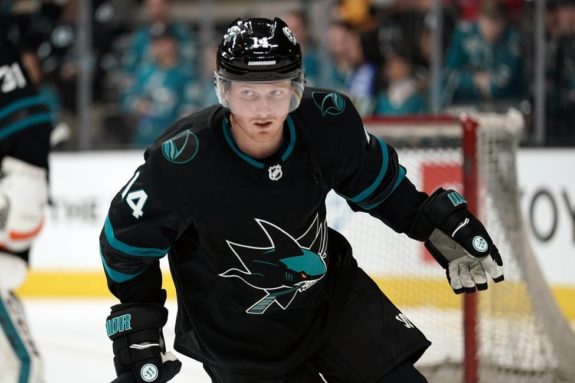
Joonas Donskoi
Donskoi is an interesting case. Donskoi has scored big goals, but been inconsistent at times and has dealt with injury issues. This is his first chance at unrestricted free agency and I’d guess he’ll get closer to $3 million, roughly a $1 million increase over his current deal (a similar figure to what an arbitrator awarded former teammate Chris Tierney last offesason).
Donskoi: add $1 million
Kevin Labanc
Labanc is finishing his entry-level contract and can expect a substantial increase. Labanc is an effective offensive player, though he has enough holes in his game to keep his price lower. He might get $2.5 million or so if he’s able to push the envelope, roughly a $2 million increase from where his $700,000 cap hit now.
Labanc: add $2 million
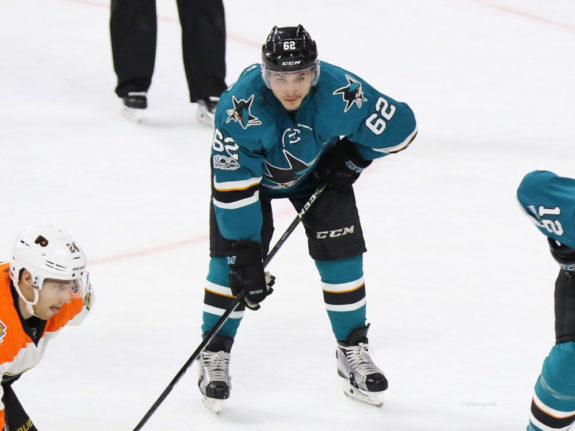
Tim Heed
Heed is an intriguing case. Heed becomes an unrestricted free agent. He’s been a part-time player for the Sharks. But in the role, Heed was quite good, posting solid offensive numbers and a very solid plus-nine rating. Heed is a right-handed defenseman with a big shot who can be useful on the power play. That isn’t quite unicorn status, but it is a very desired commodity in the league and Heed might attract considerable attention.
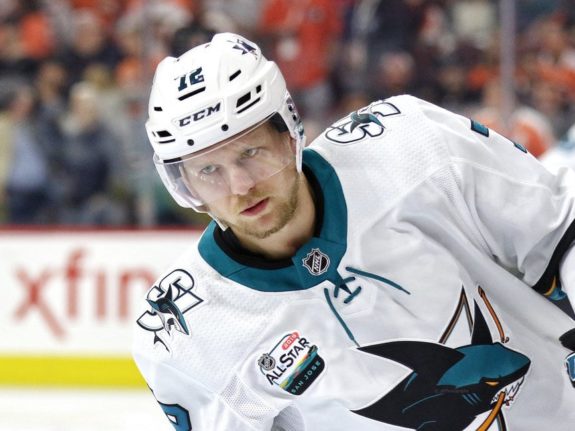
My guess is someone offers him a major increase from the $650,000 he’s getting now. The risk is he doesn’t pan out, which can be mitigated to a degree by limiting the term. I think Heed gets a deal which pays him for the upside he’s shown, but is short enough so he won’t be a long term drain if he can’t handle the bigger role. It seems a stretch, but I can see Heed getting in excess of $2 million per year on a two-year deal.
Heed: add $1.5 million
Joakim Ryan
Ryan is perhaps the most disliked player on the team, at least by head coach Peter DeBoer. Ryan is a restricted free agent, meaning the Sharks have considerable control over his next deal. My guess is both Ryan and the team will be fine if he moves on. He won’t get a huge raise, but I can see him joining the world of fifth and sixth defensemen, which gets him a bit over $1 million.
Ryan: add $500,000
Getting to $100 Million
The numbers add up to increases of $20 million, meaning the total is $97 million. No doubt my estimates will prove incorrect, but in the aggregate I feel pretty good about it all.
My best guess got to within $3 million. Is more possible? I think so.
Someone might go to the mat for Erik Karlsson and offer him $12 million a season. I think it’d be a mistake, but if a team is going to make a mistake, at least do it on an elite talent, which Karlsson surely is.
Timo Meier might get $8 million for an eight-year (maximum length) deal. It is mutually beneficial. The Sharks lock up an elite power forward through the prime of his career. In turn, Meier gets paid at close to unrestricted free agency rates. However, the Sharks have short-term salary cap challenges, and I anticipate these will take precedence in the negotiations, so I expect a shorter deal at lower annual cost.
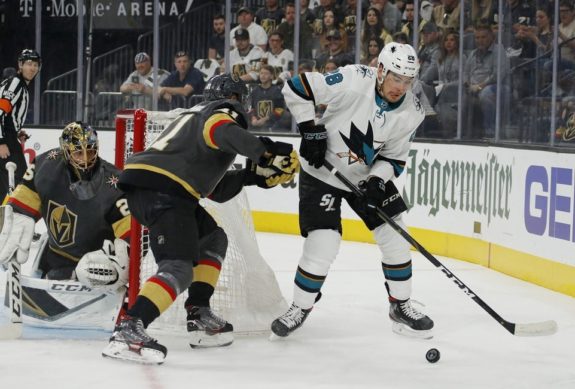
Just these two changes take the figure to $99.5 million, which is within the margin of error of $100 million. A bit more than my estimate for players like Heed, Nyquist and Ryan, and we’ve crossed the nine-figure mark.
The $100 Million Team?
Whether the current Sharks team is a $100 million team gets answered over the summer as the above players sign their new deals beginning July 1. Once the numbers are in, we’ll revisit the subject and see how it all played out.
Sharks Wise Moves?
There is a second question which overlays this analysis. Was this a wise approach? A roster with this sort of discrepancy between skill and salary cap is not sustainable over any significant length of time. One does this to go ‘all in’ in quest of a Stanley Cup. The Sharks’ talent far exceeds the salary cap. It is pushed into one season by employing players due for major raises next season.
There are risks associated with banking on any given season to make an ‘all in’ Stanley Cup attempt. Key injuries can derail a playoff push, as can running into a hot goalie on the opposing side. Sharks fans saw an impressive team lose in the Western Conference Final to the Vancouver Canucks in 2011 when rink equipment (a stanchion redirecting a puck) made the critical play in double overtime.
The upcoming offseason will be complicated for the Sharks, but this isn’t what is on their minds now. This is a team in a quest for a Stanley Cup. They are among four teams remaining, though facing elimination.
Will the investment into this 2018-19 Sharks team, perhaps the NHL’s first $100 million team, pay off? It might take a few weeks to answer the question. Or a few hours.
Zeke’s Notes
• There are other Sharks players on expiring deals excluded from this who won’t merit a meaningful salary change, specifically Micheal Haley and Dylan Gambrell. Joe Thornton is also on an expiring deal, I used the amount on his current deal. Thornton may retire or he may return. The numbers he delivered this season suggest his $5 million deal is a bit high, but not outrageously so, given he was still recovering from knee surgery until well into the season. Thornton did offer to lower his own salary in order to retain Patrick Marleau in 2017. He may do the same again next season.
• I wanted to stay away from salary cap rules in the core of the article, so I’ll address some basics here. The salary cap has a number of accounting rules and factors which make it something less than a pure salary cap.
The salary cap figure for a given player is based on the average amount the player makes, per season, over the life of his contract. While the actual salary can vary season to season, the average stays the same of the length of the contract. For example, a player who is on a two-year deal and gets $4 million one season and $6 million the next would, for salary cap purposes, have a salary cap hit of $5 million in each season. This is also know as the average annual value, or AAV.
• The earlier in a player’s career they are, generally speaking, the less bargaining power they have. Initial contracts, known as entry-level contracts, give tremendous bargaining power to the team. The next step, accorded after a few seasons, is when the player reaches restricted free agency status. In this case, the team still has the upper hand in negotiations, but players have some leverage. Under certain conditions, players can arbitrate their deal, which is another form of player leverage. The next step, usually a few more seasons in, comes with unrestricted free agency. Here the leverage shifts strongly to the player and away from the team.